
Today I want you to take a look at the two biggest rivals of today’s skies: Boeing 737 MAX and Airbus A320neo. These two aviation giants have been competing since Airbus entered the industry in 1974, with each trying to outperform the other in terms of speed, efficiency, and passenger comfort.
The Boeing 737 program has been in operation for over 50 years, while the Airbus A320 program was introduced only in the late 1980s. However, it’s the latest versions of these planes that are most relevant today and which I wanted to compare for a long time. The A320neo family was welcomed in 2016, and the Boeing 737 MAX was introduced in 2017.
So, which of these planes is ‘better’ in terms of engine efficiency, speed and popularity? Let’s compare the two and find out today’s winner of the skies.
Addressing the elephant in the room: Boeing 737 MAX Grounding
To begin, it’s important to acknowledge the recent tragedies involving the Boeing 737 MAX plane. Following two devastating crashes, the plane was grounded for a period of 20 months. This was a necessary safety measure, and the incidents showed just how important it was for Boeing to overtake its competitor Airbus at any cost.
However, following the crashes, the 737 MAX underwent extensive testing and analysis, overseen by regulatory bodies like the Federal Aviation Administration (FAA). To ensure a fair and balanced comparison, in this article I will not take these events into the account when comparing the two.
Technical Characteristics
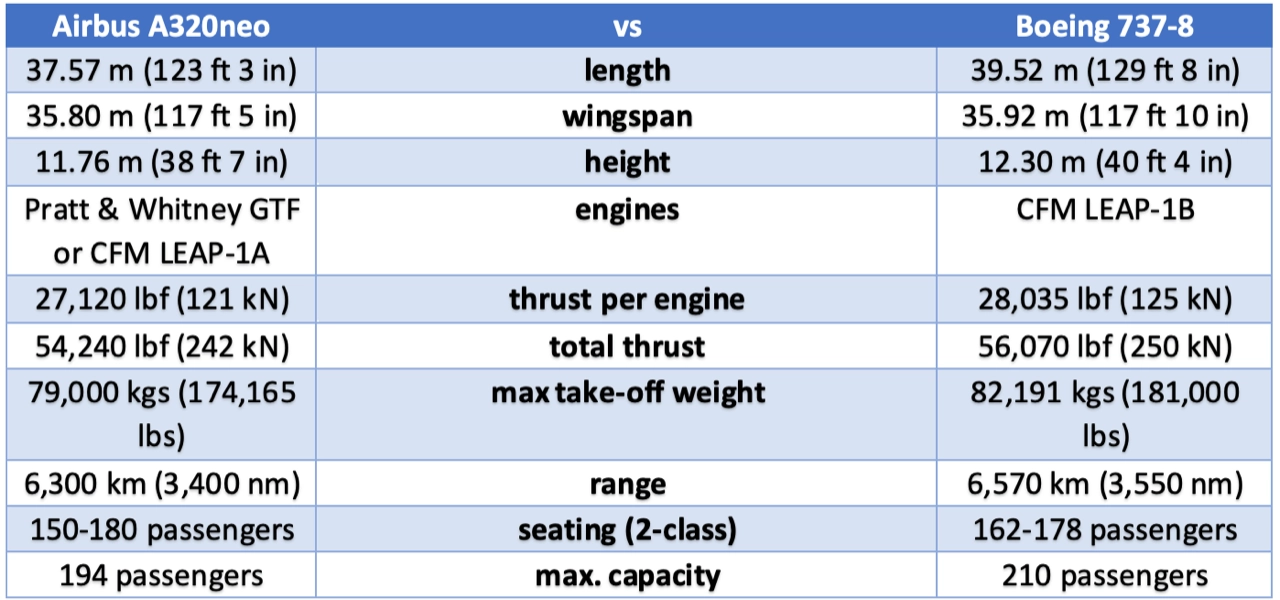
By looking at the table above, we can see that the Airbus A320neo carries two more passengers than the 737 MAX 8 in a 2-class seating configuration plan. If we look at the maximum capacity, Boeing overtakes Airbus by 16 passengers. Also, the 737 MAX 8 flying range is 270 km or 150 nm more than A320neo.
Looking at the performance specifics, we can see that the Boeing 737 MAX beats the A320 with a higher max take-off weight (181,000 lbs vs 174,165 lbs). The 737 MAX 8 can also be reconfigured into a super-dense 200-seater variant for Ryanair for example.
In general, the 737 MAX 8 carry more cargo than the Airbus A320neo, meaning more revenue, lifting power, and flexibility for airlines.
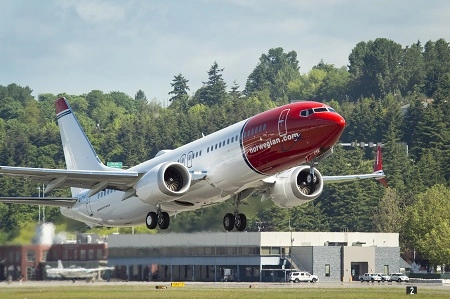
Winner: Boeing 737 MAX 8
Engines Comparison
Pratt & Whitney’s Geared Turbofan (GTF) and CFM International’s LEAP-1B are both advanced, high-bypass turbofan engines designed for use in modern commercial aircraft. But I want to address some key differences between the two:
- Architecture: GTF uses a geared fan system, which allows the fan and the low-pressure turbine to operate at different speeds, improving overall efficiency. The LEAP-1B uses a more conventional, direct-drive system.
- Size and power: GTF is available in several different sizes, ranging from 15,000 to 33,000 pounds of thrust. The LEAP-1B has a thrust range of 22,000 to 28,000 pounds.
- Fuel efficiency: Both engines offer significant improvements in fuel efficiency over previous generation engines, but the GTF has been touted as the more efficient of the two, with claims of up to 20% better fuel efficiency than older engines.
- Noise reduction: Both engines incorporate advanced noise reduction technology, but the GTF is generally considered to be the quieter of the two.
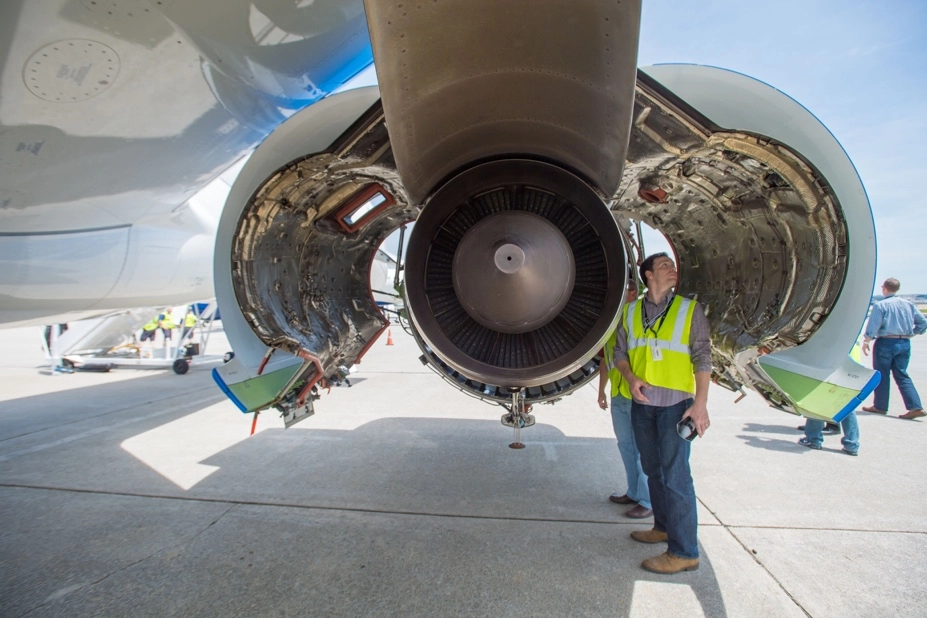
As for the comparison between the CFM LEAP-1B and LEAP-1A:
- Architecture: Both engines use a direct-drive system, with no geared fan. However, the LEAP-1A has a slightly larger fan diameter.
- Size and power: LEAP-1A has a thrust range of 22,000 to 29,000 pounds, slightly higher than LEAP-1B.
- Fuel efficiency: Both engines offer significant improvements in fuel efficiency, but the LEAP-1B has been claimed to be slightly more efficient than the LEAP-1A.
- Noise reduction: Both engines incorporate advanced noise reduction technology, with similar noise reduction levels.
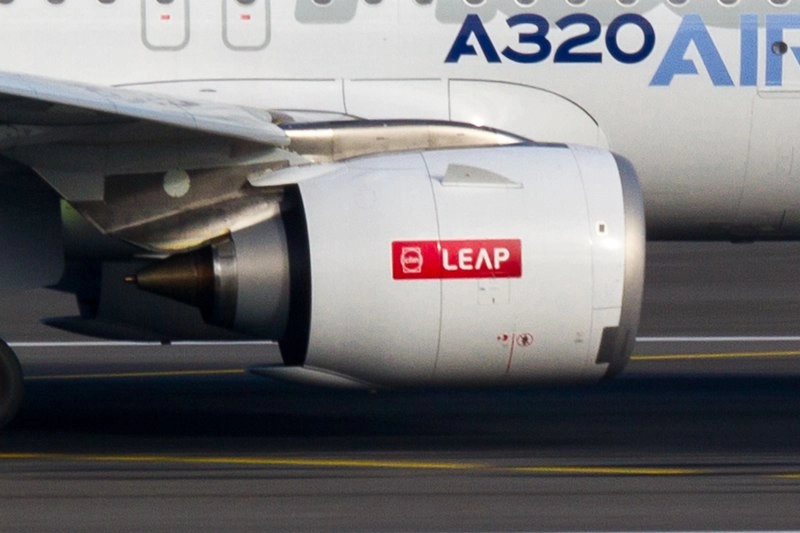
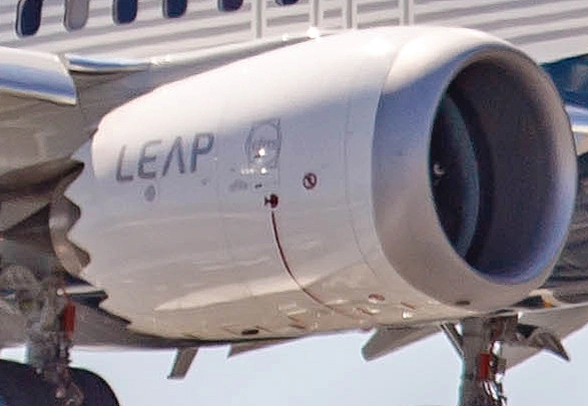
Overall, the differences between the LEAP-1B and LEAP-1A are relatively minor, with both engines offering similar levels of performance and efficiency.
However, the GTF stands out for its geared fan system, which offers significant improvements in efficiency and noise reduction. This means that Airbus with its two available engine options overtakes Boeing in terms of efficiency and a range of choices.
Winner: Airbus A320neo
What about the costs?
In 2018, it was announced that Airbus A320neo would cost $110.6 million. In 2019, Boeing announced that MAX 8 would cost $121.6 million.
Clearly, Airbus is cheaper and is able to produce more aircraft due to its multiple factories around the world. Price is an important factor, especially for new aviation companies that are cost-sensitive and looking into a long-term business plan.
Winner: Airbus A320neo
Orders and deliveries of the ‘families’
The aftermath of the 737 MAX accidents and groundings had a huge impact on Boeing’s reputation. In 2020, Boeing reported some alarming numbers. The plane sales hit their worst record in over five decades since no new orders were received in January of that year. The last time similar happened at the company was back in 1962.
In contrast, in early 2022, Airbus announced plans to ramp up the A320 program above a rate of 63 planes each month. This will result in a further increase of one or two aircraft per month. As a consequence, Airbus would manufacture 67 jets each month within three years.
In February 2020, Airbus CEO Guillaume Faury made the following statement to CNBC:
"The direct competitor to the 737 MAX is the A320 in the Airbus family of products. And on the A320, as you know, we are sold out until 2025 so we have no real opportunity in the short-term to offset the consequences of the grounding."
However, the pandemic later that year had a significant impact on the business of both plane manufacturers.
From the beginning of 2020 until the end of the year, the total figure of MAX orders was 641 planes.
As the pandemic subsided, travelers caused narrowbodies around the world to become incredibly busy this year. In 2021 there were 375 net orders placed for MAX aircraft. The growth has continued with 561 net orders in 2022.
Despite the MAX’s comeback, the A320neo family is experiencing greater progress. There were 444 net orders in 2021, and 770 in 2022.
The total number of orders for both companies is as follows (as of March 2023):

Winner: Airbus A320neo
Conclusion
Congratulations Airbus A320neo!
Based on the technical characteristics, costs and orders, the winner is the Airbus A320neo. While the Boeing 737 MAX wins in terms of technical aspects by having the max-take-off weight, flying range and capacity, the Airbus A320neo offers a higher passenger seating capacity, is a cheaper alternative and offers more efficient Pratt & Whitney GTF or CFM LEAP-1A engines.
Also, by looking at the orders and deliveries, Airbus has been surpassing Boeing in the race for the coveted title of the world’s most successful commercial aircraft.
Sources:
https://simpleflying.com/the-airbus-a320neo-vs-boeing-737-max-what-plane-is-best/
https://www.boeing.com/commercial/737max/
https://aircraft.airbus.com/en/aircraft/a320-the-most-successful-aircraft-family-ever/a320neo
https://www.aviatorjoe.net/go/compare/737_MAX_8/A320neo/
https://en.wikipedia.org/wiki/List_of_Airbus_A320neo_family_orders_and_deliveries
https://en.wikipedia.org/wiki/List_of_Boeing_737_MAX_orders_and_deliveries#cite_ref-7